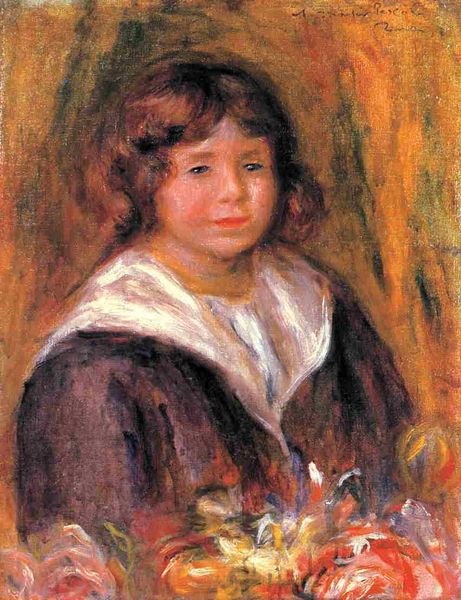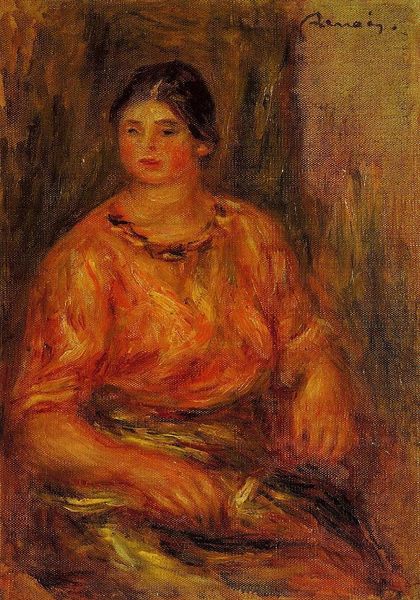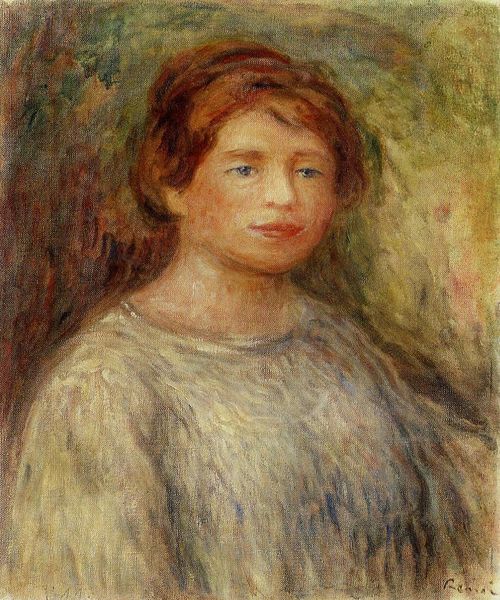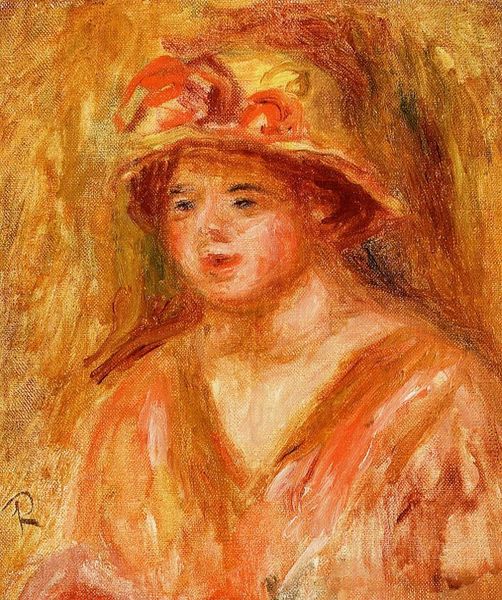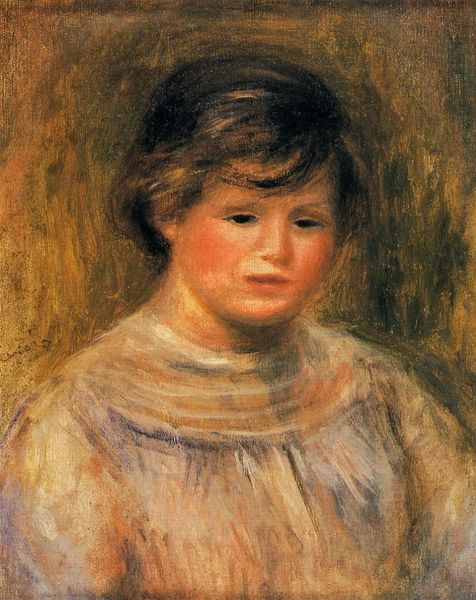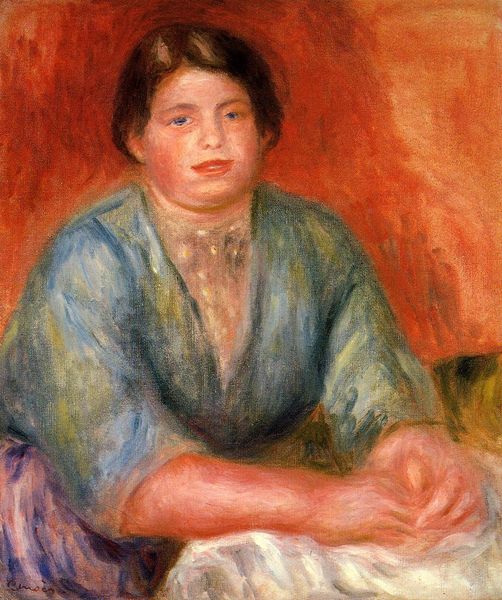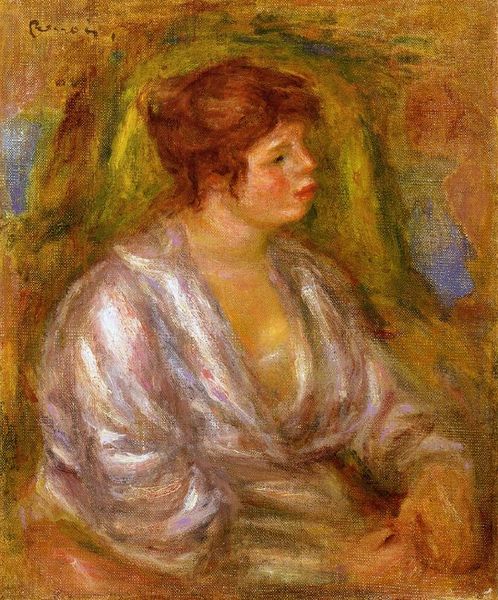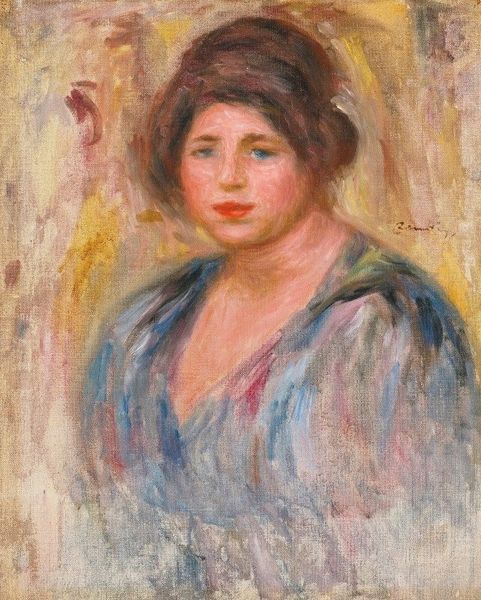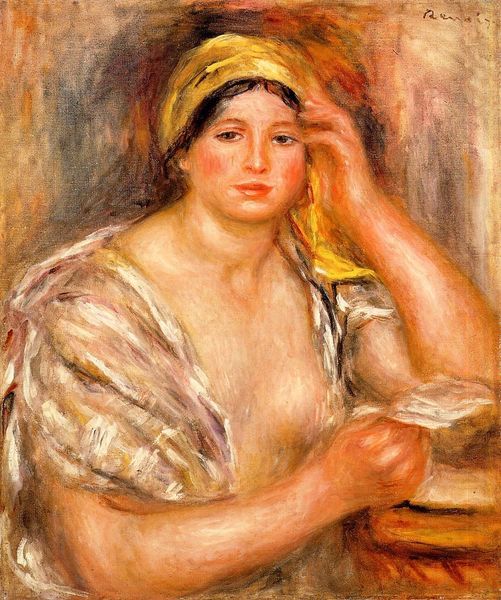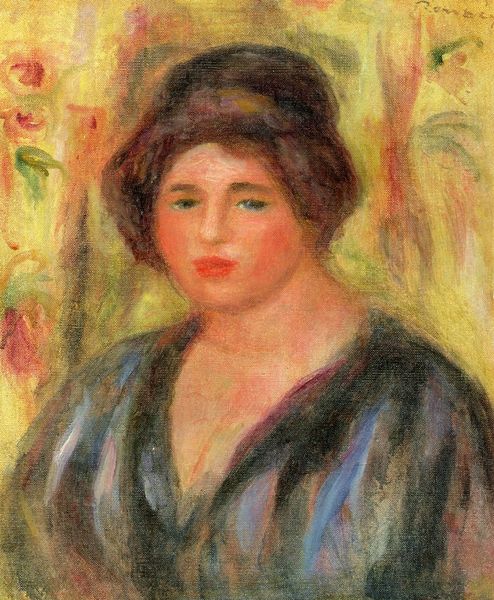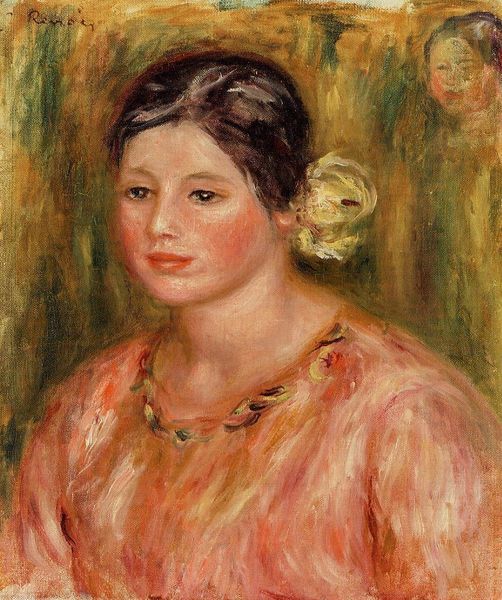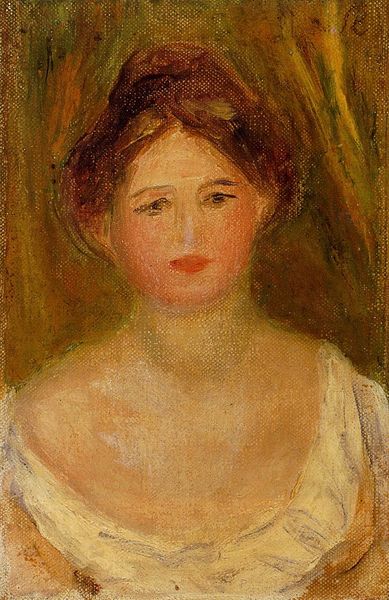
Copyright: Public domain
Curator: Let's discuss Renoir's "Woman's Head" from 1919, rendered in oil on canvas. It’s part of a private collection. My first thought is melancholy—there’s a discernible sadness in the downturned eyes. Editor: Yes, but note how Renoir deploys color—primarily soft golds and oranges—to create an almost tactile warmth, pulling the viewer in. It’s quite intimate. He focuses on formal elements; the balance of light and shadow shapes her features beautifully, abstracting gender. Curator: I appreciate your interpretation. Yet, it’s challenging to ignore the sociopolitical context, post-World War I. Renoir was painting this at a time of immense loss and re-evaluation of social structures. It seems irresponsible not to address the themes of vulnerability and the search for stability in this portrait. Her gaze feels burdened, mirroring a society grappling with trauma. Is it not, perhaps, naive to disconnect it? Editor: But look at the brushstrokes, so free, and loose. That's not a conscious reference, surely? I suggest they represent the aesthetic concerns of late Impressionism more. The medium dominates and not message or symbol. Curator: The very materiality is speaking. These marks and their colors might evoke emotional responses informed by a period devastated by war. Also, as a woman in 1919, did she experience equal rights? Where is HER narrative? Surely, that is imprinted? Her gaze avoids meeting the viewers eye, like she needs some escape, suggesting her own historical subjugation to cultural objectification as simply woman. This to me transcends his choices, whether intentional or otherwise, making that the most pertinent truth about this art object, an "imprinted historical narrative". Editor: Alright. Perhaps, there is a blending then; a complex intersection between his intention to portray the beauty through light, brushstrokes and form and then of a larger societal and historical picture—which you quite rightly identify—lends resonance to Renoir's exploration of femininity. Curator: Indeed! Acknowledging intersectionality—as in the context, alongside formal choices makes analysis and criticism richer. Editor: It deepens our insight, for certain.
Comments
No comments
Be the first to comment and join the conversation on the ultimate creative platform.
